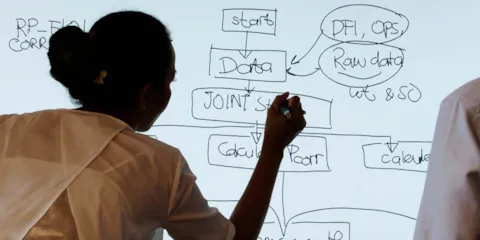Root cause analysis of equipment failures: Classroom
This course covers analyses techniques that can be applied to combine laboratory analyses, data and assessment methods in identification of immediate causes, root causes and status of barriers for managing risk as well as prioritizing actions to be taken.
Managing equipment failures with adequate controls, prevention and effective mitigation is crucial for asset integrity management. DNV provides an effective and systematic root cause analyses course for equipment failures.
Course description
The course covers analyses techniques that can be applied from simple to complex systems. These analyses techniques enable the combination of laboratory analyses, data and assessment methods in identification of immediate causes, root causes and status of barriers for managing risk, as well as prioritizing actions to be taken. The methodology supports inspection and maintenance, function testing planning and selection of the best solutions for prevention of recurrence of equipment failures.
Course agenda
Day 1:
- Introduction
- Course objective and what participants will learn i.e. how to apply RCA to both simple systems and complex groups of systems
- Equipment failure types, examples of equipment failures
- Site investigation, data collection, how to interview, witness statements, observations, documentation and sample selection and preservation
- Laboratory analysis methods
- Structural or thermal FEA/fracture mechanics/CFD/modelling and simulations
- Input to root cause analysis
- Failure analysis report
- Analyses of information i.e. design documents, functional specifications, manufacturing, installation, operations procedures, operations records/data, photographic records, witness statements/observations, failure records, fitness for service and repairs/modifications
- Root cause analyses approaches
- Step-method
- FMEA
- Event tree
- Failure tree
- Interview
- Fish bone
- Why-why
- Bow-tie
- DNV’s barrier based systematic cause analysis technique (BSCAT)
- Bow-tie methodology
- Timeline and events
- Scenario evolution
- Barriers and escalation factors.
Day 2:
- Bow-tie diagram for equipment failure cases
- Hypotheses generation and evaluation
- Hypothesis generation
- Hypothesis evaluation
- Generating evidence to prove hypothesis
- Conclusion to root cause
- Case studies
- Participants are using bow-tie software for simple and complex systems to identify:
- Immediate cause(s)
- Basic causes i.e. root cause(s)
- Status of barriers that could have prevented failure
- Areas for improvement to prevent re-occurrence
- Solutions for prevention and mitigation
- Summing up
- Questions & answers.
Target group
The course is intended for inspection, maintenance, electrical and instrument engineers requiring more knowledge of the application of root cause analyses for offshore structures, piping/pipelines and process equipment, including instruments and rotating equipment.
The lecturer
Find more about Jens P. Tronskar, Senior Vice President and Chief Technology Officer of DNV's Technology Centre West in Singapore.
